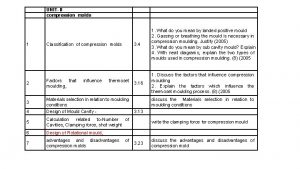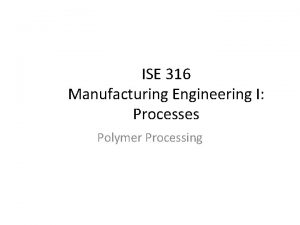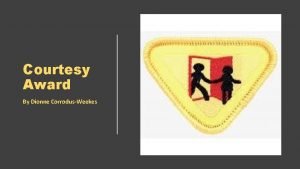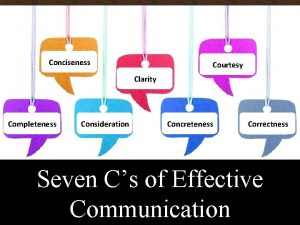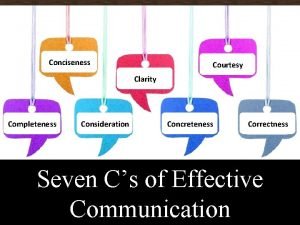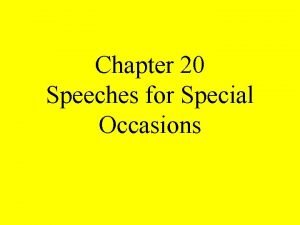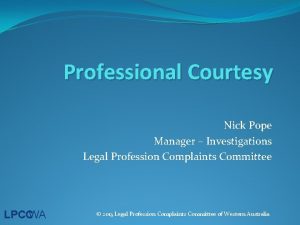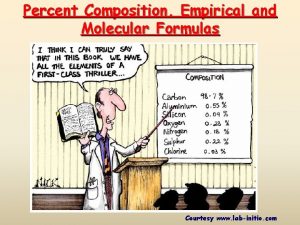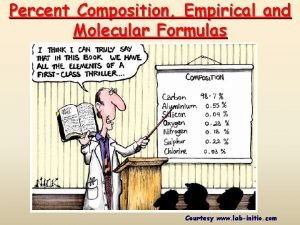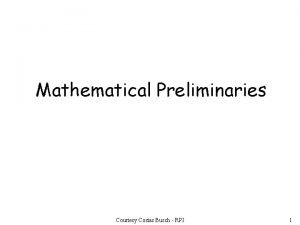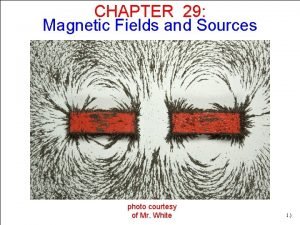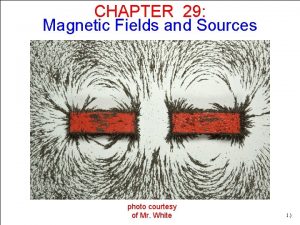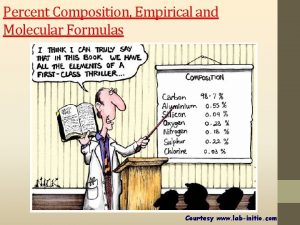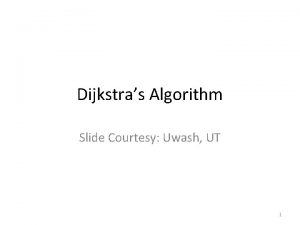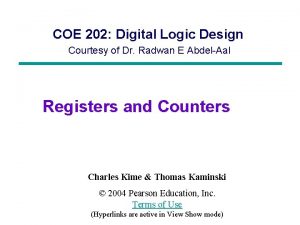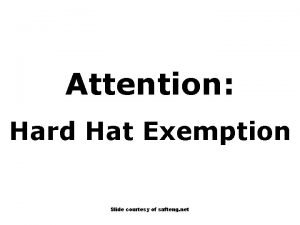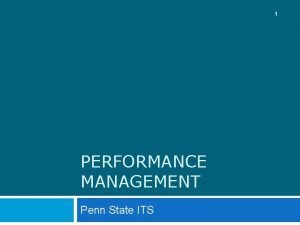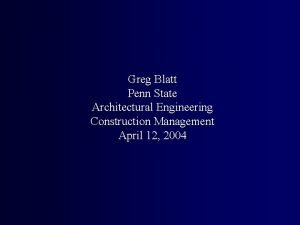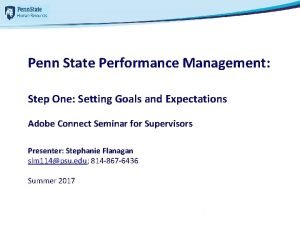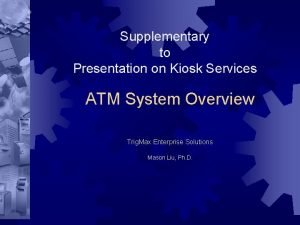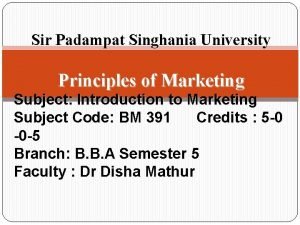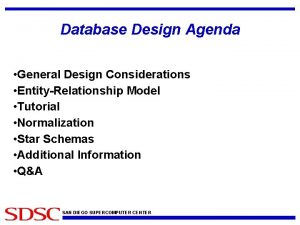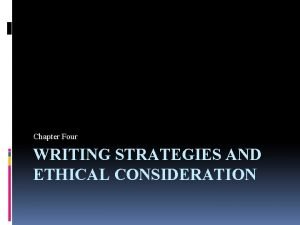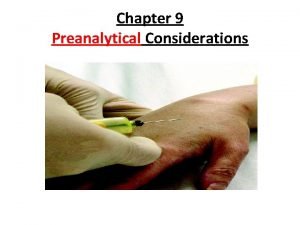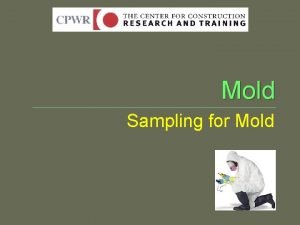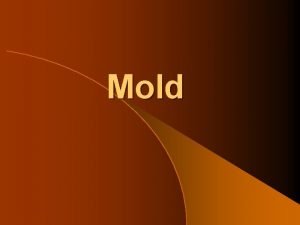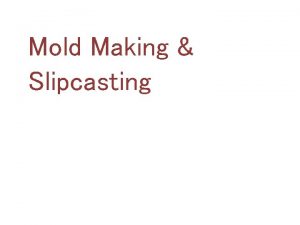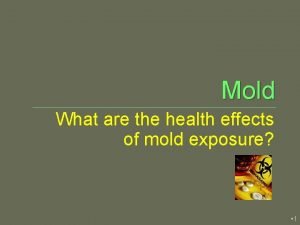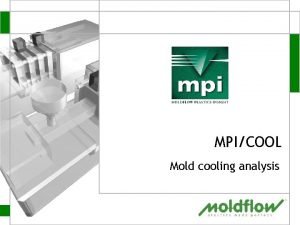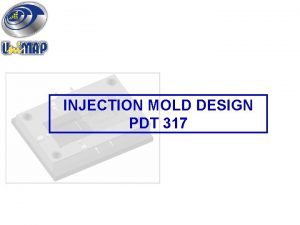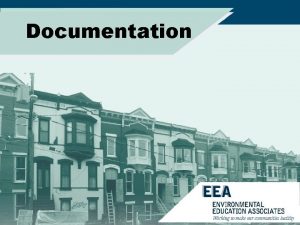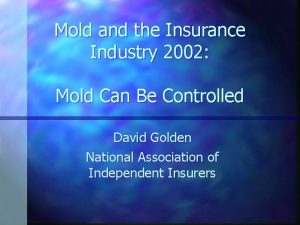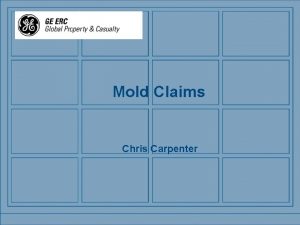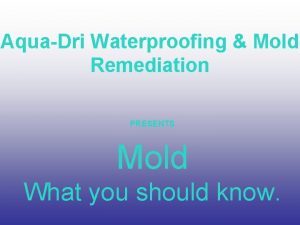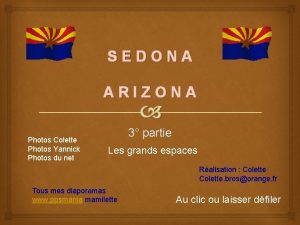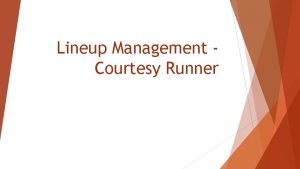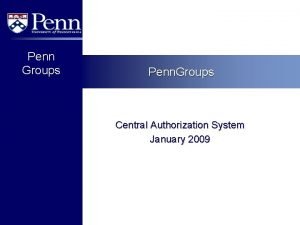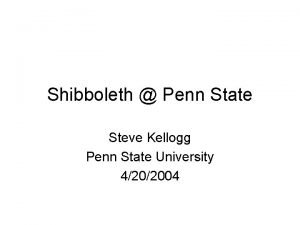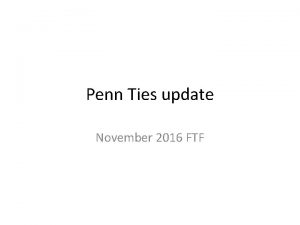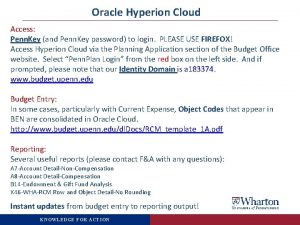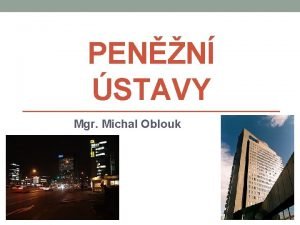Mold Management Considerations Photos courtesy of USEPA Penn









































- Slides: 41

Mold Management Considerations Photos courtesy of USEPA, Penn State, and others Prepared for: Penn State Design & Construction Services University Park October 13, 2017 Prepared by: Hans Derr, CIH OPP/EHS – Manager, Health & Environmental Programs Curt Speaker OPP/EHS – Biosafety Officer

Mold Management Considerations Design & Construction Services Overview • • Mold Fast Facts Design & Construction Considerations • • Mold Response @ Penn State – Internal vs. External Resources • • • General design/construction issues Penn State D&C Standard sections Penn State EHS website Handout – Other information Questions/ Follow-up

Mold Fast Facts • Single and multi-celled filamentous organisms: – 300 K+ species? – Nutrition from dead/ decaying organic (carbon-containing) materials require moisture for growth – Reproduction: Spores (like pollen), 2 - 100 micron size – Moisture: critical to growth (humidity-water), vary by species – “Ubiquitous” (planet-wide, indoors, outdoors) – Growth: nearly any porous substrate • Health effects: – Spores allergenic – Produce odorous, irritating compounds – range of health symptoms – Produce toxins: Species-, environment-dependent; toxic in agricultural/ high concentrations, long duration (ACOEM, 2002) – Pathogenic (infect-growth): immune-compromised persons – Non-Biological Contaminants: Damp or wet building materials may off-gas other chemical irritants

Mold Fast Facts • Growth degrades building materials, systems, AND indoor environmental quality – Effects may not be eradicated/abated in all materials; will eventually destroy substrate, therefore: • Control moisture – control mold growth – Uncontrolled indoor mold growth is never an acceptable operating condition • Health Complaints – – – “Black discoloration” – a perception AND real problem Lead to: significant employee/ occupant concerns, . . triggers: time-sensitive response expectations, . . triggers: perception of faulty/failed response triggers: OSHA complaints, . . triggers: 40+ response hours (can exceed 120 hrs!) • Humidity Control – %RH > 65% significantly increases likelihood growth – %RH < 60% (others: 50%) significantly decreases potential growth – %RH Optimum: 30 – 60%

Design & Construction Considerations • General – OA intakes – Construction leaks – HVAC design and operability issues (one or more in combination) ü Re-heat/ spatial condensation, humidity ü Controls capability-planning: spatial temperature sensing, ü Inadequate air movement ü Filtration ü Coil condition/cleaning: capability for access/ periodic PM’s ü Fresh Air: Inadequate exchange OR Uncontrolled introduction thereof ü Building pressure imbalances – incomplete-ineffective commissioning ü Insulation Lining (NOT D&C OPTIONAL) REQUIRES EXCELLENT-EFFECTIVE: – Continuous, effective filtration – Reheat/ humidity control – Microbial resistance – Planned, periodic, preventive maintenance-cleaning

Design & Construction Considerations • General – Other interjecting factors: • Interior building/ biological sources • Porous materials spec’d in areas prone to humidity • Roof and envelope design/ ventilation • Design & Operation – Water incursion via: • Exterior Leaks: roof, windows, foundations (gray water) • Plumbing leaks: (Potable, Gray water, Sewage-black water) • Flooding (impacts by both sources) • Sprinkler activation

Design & Construction Considerations • General – Other interjecting factors: • Interior building/ biological sources • Porous specified materials in areas subject/ prone to humidity • Roof and envelope design/ ventilation

Design & Construction Considerations • PS Design & Construction Standards – Ensure Architects and Engineers familiarity with pertinent standard sections: • • 01 50 00 – Temporary Facilities and Controls 23 00 00 – HVAC Air Distribution 23 31 00 – HVAC Ducts and Casings 23 41 00 – Particulate Air Filtration – Avoid mismatches of finishes and building humidity control or operating features – Commissioning documents: operational/PM elements – Q/C critical features to avoid excess budget-focus (value engineering) – Manage construction to avoid temporary water infiltration – REFER to ASHRAE STANDARDS

Like weeds, mold response may pose challenges

Design & Construction Considerations • Mold Response at Penn State: Internal vs. External – OPP Technical Services trained for custodial cleaning, and small-medium scale response • Custodial Cleaning (mildew, surface mold, limited scope) – Standard protective measure include eye, gloves, skin protection and application of cleaning/sanitizing solutions, damp control methods, respiratory protection voluntary – not anticipated • Small Scale (up to 3 square feet) – Area isolation, system shutdown, gloves, eye protection, disposable coveralls, respirator, HEPA vacuums, possible HEPA air filtration, spray mist/ damp work control, surface sanitize-wipe • Medium Scale (3 – 10 square feet) – All above plus HEPA air filtration – Large Scale (> 10 square feet) • Refer to outside qualified IICRC or ACAC Contractors utilizing pertinent IICRC or NADCA (HVAC) cleaning standards and protocols – Ultimate Decision by OPP with support/guidance by EHS

Design & Construction Considerations • Resources – Penn State EHS Website https: //ehs. psu. edu/indoor-air-quality/requirements-guidelines • Indoor Air Quality Standard Procedures (2014) • Mold Standard Operating Procedure (2014) • Water Incursion Guide (updated 2012)

Design & Construction Considerations • Resources – Handout/ Other Information • ASHRAE Standards: – – 62. 1 -2010 55 -2010 0 -2013 188 -2015 Ventilation for Acceptable Indoor Air Quality Thermal Environmental Conditions for Human Occupancy The Commissioning Process (2013 or updated) Legionellosis: Risk Management for Building Water Systems • Certified Servicer Training – Institute of Inspection, Cleaning, and Restoration Certification (IICRC) » Mold Removal Specialist or Applied Microbial Restoration Technician (alternate) – American Council for Accredited Certifications » Certified Mold Remediator (CMR) • Cleaning/ Remediation Standards: – ACR- The NADCA Standard for Inspection, Cleaning, and Restoration Certification of HVAC System (2013) http: //acrstandard. nadca. com

Design & Construction Considerations • Resources – Handout/ Other Information • Cleaning/ Remediation Standards: – ACR - The NADCA Standard for Inspection, Cleaning, and Restoration Certification of HVAC System (2013) http: //acrstandard. nadca. com – IICRC Standards: » S 400 Commercial Built-Environment Cleaning and Restoration » S 550 Commercial Structural Drying » S 520 Mold Remediation

Design & Construction Considerations • Questions? EHS Contact Information – – Hans Derr Curt Speaker EHS General Bob Segura, Acting Dir. (814) 863 -3834 (814) 863 -3905 (814) 865 -6391 (814) 863 -3874 thd 12@psu. edu css 2@psu. edu ras 78@psu. edu

Design & Construction Considerations • Presentation Support Slides

Prevention and Control of Mold Growth – General Guidelines • Prompt attention to water incursion – First 24 to 48 hours are critical • Effectively extract potable or gray water followed by steam cleaning • Clean mold from surfaces using wet methods or HEPAvacuum – Use mist then HEPA vacuum to remove spores • NO dry-brushing or standard vacuuming • Do everything possible to limit the spread of mold spores • Final clean using sanitizer or disinfectant • Eliminate uncontrolled sources of moisture

Levels of mold response – to clean? …or not to clean? • For small spots on drywall, cinderblock (CMU), vent covers/diffusers, bathroom tile, other hard surfaces, lightly spray mold and wipe off • Porous items (paper, cardboard, ceiling tiles) – cannot usually be saved, unless very light growth • Cloth items can be laundered, if limited growth period • Carpeting should be HEPA-vacuumed, then steam- or hotwater/disinfectant extracted • Prompt drying is essential to prevent re-growth

Levels of mold response – to clean? …or not to clean? • Drywall – Localized spots can be cleaned/paint sealed • Drywall – Arrange for removal if swelling or deteriorating • Drywall or Plaster – Large areas (>10 -15 square feet) or several smaller areas in a room require more area preparation and control, request assistance. • Insulation – If moldy, arrange for removal • Carpet – If carpet backing shows mold growth, or if not cleaned/sanitized within 56 hours, carpet should be discarded

Levels of mold response – to clean? …or not to clean? • Discard all items impacted by sewage water (black water) • Diffusers may be wipe-cleaned, unless extensive – Look for mold on internal duct surfaces • Avoid cleaning that require extensive movement of equipment or articles to access the mold – Obtain assistance before cleaning or removing extensively-impacted surfaces

Mold Response Guidelines • Mold Evaluation and Controls – NY City Department of Health (2008) – US Environmental Protection Agency – American Industrial Hygiene Association – Health Canada Guidelines • Mold Health Information – Centers for Disease Control and Prevention – PA Department of Health

Mold Response Guidelines • Mold Level I, Small isolated areas, generally < 10 square feet (OSHA Guide Abbreviated) – Corrective action by regular building staff with training in proper clean-up methods, personal protection, and potential health hazards. Training can be part of OSHA Hazard Communication Standard training. (29 CFR 1910. 1200). – PPE/ Respiratory protection (e. g. , N-95 disposable respirator) recommended with spore disturbance. Respirator use (voluntary or required) per OSHA respiratory protection standard (29 CFR 1910. 134). Gloves and eye protection should be worn. – Work area unoccupied. Adjacent area personnel may remain, except: infants (less than 12 months old), persons recovering from recent surgery, immunesuppressed persons, persons with chronic inflammatory lung diseases (e. g. , asthma, hypersensitivity pneumonitis, and severe allergies). – Containment not required. Dust suppression methods advised prior to remediation (such as misting/ not soaking). Possible HEPA vacuuming. – Contaminated materials that cannot be cleaned should be removed from the building in a sealed impermeable plastic bag; materials may be disposed of as ordinary waste. – Work area/egress cleaned with a damp cloth or mop and a detergent solution. – All areas should be left dry and visibly free from contamination and debris.

Mold Response Guidelines • Mold Level II, Mid-sized isolated areas, 10 -30 sq ft. (OSHA Guide Abbreviated) – Corrective action by regular building staff with training in proper clean-up methods, – – – – personal protection, and potential health hazards. Training can be part of OSHA Hazard Communication Standard training. (29 CFR 1910. 1200). PPE/ Respiratory protection (e. g. , N-95 disposable respirator) recommended with spore disturbance. Respirator use (voluntary or required) per OSHA respiratory protection standard (29 CFR 1910. 134). Gloves and eye protection should be worn. Work area unoccupied. Adjacent area personnel may remain, except: infants (less than 12 months old), persons recovering from recent surgery, immune-suppressed persons, persons with chronic inflammatory lung diseases (e. g. , asthma, hypersensitivity pneumonitis, and severe allergies). Work area surfaces (that could become contaminated) covered with secured plastic sheet(s) before cleaning/ remediation to contain dust/debris and prevent further contamination. Note: possible HEPA air cleaner (not cited by OSHA) Dust suppression methods advised prior to remediation (such as misting/ not soaking). Note: Possible HEPA vacuuming (not cited by OSHA). Contaminated materials that cannot be cleaned should be removed from building in a sealed impermeable plastic bag; materials may be disposed of as ordinary waste. Work area/egress cleaned with a damp cloth or mop and a detergent solution. All areas should be left dry and visibly free from contamination and debris.

Mold Response Training • Mold response training providers and courses – Similar to those established for asbestos and lead abatement industry • Wet misting and wet methods to control dust • HEPA vacuums for collecting and containing particles • Bagging and sealing of contaminated waste (not asbestos-labeled) • Isolation measures (building HVAC, rooms, work areas, etc. ) • Similar use of negatively-pressurized containments-work areas (large scale projects) – Primarily developed by Fire/Water Restoration industry • Certifying bodies, courses, standards include: – International Institute of Cleaning & Restoration Contractors (IICRC) – American Council of Accredited Certifications (ACAC)

Mold sampling, analysis & interpretation • General Requirements: – Requires specialized microscope, and a trained microscopist, and/or mycologist to positively identify molds • Primary Purpose: – Used to determine if mold is growing indoors or within building materials or equipment • Common Sampling/ Analysis Categories: – – Air sampling Surface sampling Bulk sampling Specialized sampling • Mold sampling is not used to confirm visible mold or visible damage

Mold sampling, analysis & interpretation • Mold sample analysis interpretation guidelines – Culturable air and spore sampling results compare indoor and outdoor mold types and concentrations • Types should be similar (generally) • Outdoor concentrations should be greater or similar than indoors • Salient differences in types may occur between outdoor and indoor areas where indoor water or microbial sources present (laboratories, kitchens, bathrooms, etc. ) – Bulk sampling • Supports location or verification of air sample findings – Specialized sampling such as polymerase chain reaction(PCR) • Highly accurate DNA analysis to verify mold species • Locate or verify opportunistic pathogens

In Summary … • Visible surface mold does not mean that elevated mold levels are present in the air. • Mold sampling is not necessary to confirm visible mold or visible mold damage (seeing is believing). • Using the senses (visual, odor, dampness, etc. ) still the best indicator of identifying an existing mold problem. • Mold can be safely cleaned, handled and controlled. • Apply appropriate skills and level of response to each situation. Obtain assistance with suspected extensive mold damage.

Mold Response Resources • Resources, certifying bodies, courses, standards include: Organization Resource(s) provided URL - Website USDOL/ OSHA Safety & Health Information Bulletin- “Mold in the Workplace” (SHIB-03 -10 -10) https: //www. osha. gov/dts/sh ib/shib 101003. html USDOL/ OSHA Mold webpage www. osha. gov/SLTC/molds/ USEPA Moisture Control Guidance for Building Design, Construction and Maintenance (EPA 402 -F 13053) http: //www. epa. gov/iaq/pdfs /moisture-control. pdf USEPA Mold Course - "Introduction to Mold and Mold Remediation for Environmental and Public Health Professionals" http: //www. epa. gov/mold/ moldcourse/index. html USEPA Mold Resources webpage http: //www. epa. gov/mold/ moldresources. html USEPA Mold Remediation in Schools and Commercial Buildings EPA 402 -K-01 -001 (Sept. 2008) http: //www. epa. gov/mold/pd fs/moldremediation. pdf

Water Incursion through Ceiling

Water Incursion through a Wall

Roof Leak and Associated Mold Growth

Mold Growth is not always readily visible Drywall beneath baseboard …and beneath wall paper

Mold on Carpet Backing

Mold on Subfloor beneath Carpeting • Begin considering …how might you respond?

Mold Growth on Textiles • Mold, stains, or both?

Mold on Pipe Insulation • Beautiful colors… • Water or humidity?

Mold on Pipe Insulation – Considerations • Pipe insulation may be moldy because: – High, uncontrolled humidity in the immediate area – Water incursion from area pipes has wetted the outer cover of the insulation – Pipe insulation improperly installed, allowing for cold/humid air to condense on pipe surfaces – Pipe hanger has crushed insulation, making pipe or hanger vulnerable to condensation – Pipe(s) are leaking…water running inside pipe, and penetrating insulation

Mold Growth related to Ventilation Systems In Ductwork On Diffusers

Mold Growth related to Ventilation Systems • What are we seeing?

Humidity-Related Mold • Bathroom mildew • On Diffuser from condensation

High, Uncontrolled Humidity • Unwanted increase of humidity in an indoor environment or building – May follow a water incursion event with incomplete drying and ventilation of the area – Usually associated with poorly ventilated areas – HVAC system malfunctions – HVAC system limitations (limited air exchange) • e. g. North Halls – Condensation on cold room surfaces

Moldy pipe insulation or asbestoscontaining material considerations • Methods to control spread of mold are similar to those used with asbestos – No dry removal – Thorough wetting of surfaces – Minimize handling of material – Area isolation for larger jobs – Respiratory protection & PPE • Type of insulation not a significant factor (except asbestos) – i. e. disposal requirements
 Are algae plants or protists
Are algae plants or protists Compression molded
Compression molded Pot type mold & plunger type mold are the classification of
Pot type mold & plunger type mold are the classification of Courtesy notice
Courtesy notice Courtesy award
Courtesy award Completeness in communication
Completeness in communication Concreteness and conciseness
Concreteness and conciseness Courtesy is a positive trait
Courtesy is a positive trait Courtesy speeches
Courtesy speeches Attitude and discipline
Attitude and discipline 7 c's of communication clarity
7 c's of communication clarity Application for the post of a waitress
Application for the post of a waitress Expression of courtesy
Expression of courtesy Greetings and farewells in english and spanish
Greetings and farewells in english and spanish Greetings farewells and courtesy expressions en español
Greetings farewells and courtesy expressions en español Vimeforum
Vimeforum Empirical formula from percent composition
Empirical formula from percent composition Percent composition of magnesium carbonate
Percent composition of magnesium carbonate Courtesy
Courtesy Courtesy
Courtesy Courtesy
Courtesy Courtesy
Courtesy Slide courtesy
Slide courtesy Composition to empirical formula
Composition to empirical formula Courtesy hor
Courtesy hor Slide courtesy
Slide courtesy Coe 202
Coe 202 Slide courtesy of
Slide courtesy of Courtesy
Courtesy Jrw penn state
Jrw penn state Construction management penn state
Construction management penn state Penn performance management
Penn performance management General consideration of machine design
General consideration of machine design Tax considerations for setting up a new business
Tax considerations for setting up a new business Software architecture of atm machine
Software architecture of atm machine Exchange transaction and relationship in marketing
Exchange transaction and relationship in marketing Mechanical considerations of transmission line
Mechanical considerations of transmission line Database design considerations
Database design considerations Contrasting acquisition
Contrasting acquisition What is cloud delivery model
What is cloud delivery model Writing strategies and ethical considerations
Writing strategies and ethical considerations Basal state blood collection
Basal state blood collection

